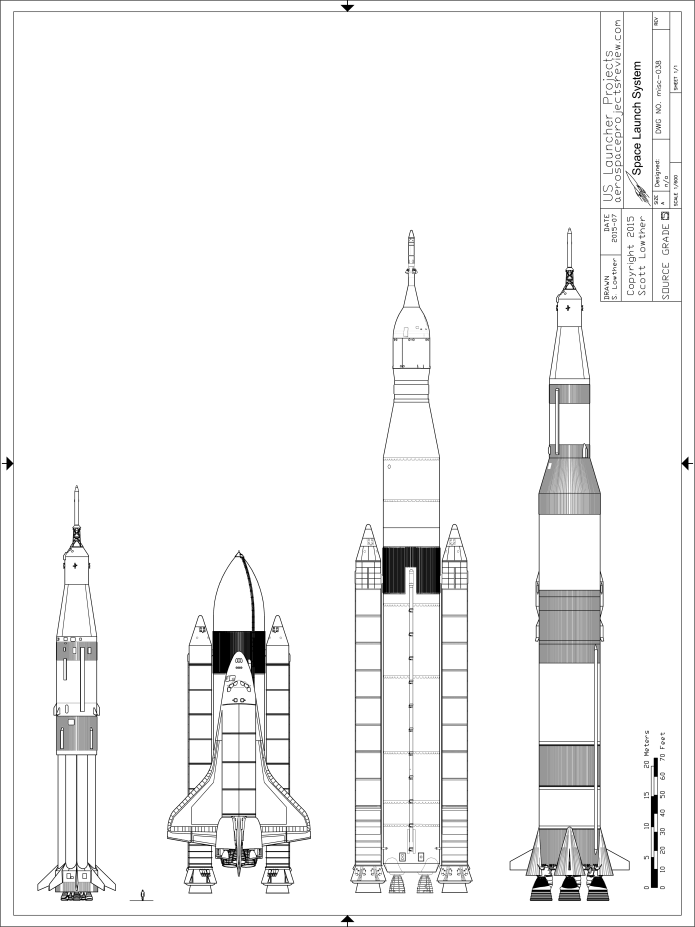The Space Launch System continues to meander ahead. This surprises me; I thought sure it would’ve been cancelled by now. But forward it goes. Proof of that progress comes in the form of NASA recently signed a $1.16 billion dollar contract with Aerojet Rocketdyne (seriously, how depressing is it that this is now one company, rather than two vibrant competitors?) to restart production of the RS-25 rocket engine. Four of these engines will power the core of the SLS launcher.
Diagram showing the Saturn I, Space Shuttle, SLS and Saturn V to scale
The RS-25 was also – and better – known as the Space Shuttle Main Engine. It’s an incredibly complex, fabulously expensive engine, because it tries to squeeze every last erg of performance from the hydrogen and oxygen propellants, and because it’s a man-rated engine that *cannot* be allowed to self-disassemble, and because it’s reusable.
Except… the new RS-25s will be tossed away with each SLS flight. Every time the rocket goes up, four RS-25s will be dumped into the drink.
Seems just a little bit of a waste.
As part of the new contract, the RS-25’s will be modernized; since there’ll be no reusing them, manufacturing processes are to be streamlined and parts count will be reduced. That’s good, but unless the parts count drops a *lot,* the price per engine will remain painfully high.
Interestingly, this is kinda the same/kinda the reverse of the history of the H-1 engine used on the Saturn I. The Thor and Jupiter MRBMs used the LOX/RP-1 S-3 engine; it was the right size for the new Saturn I, but was terribly expensive. So Rocketdyne engineers took the S-3 apart, figured out what they needed and what could be simplified, reduced parts count by (IIRC) more than 90%, and produced the H-1 engine. Lighter, cheaper, more powerful and, as it turned out, reusable without even really trying.
Throwing away the RS-25s after each flight is not necessarily necessary. Many, many Shuttle-derived launch vehicles have been designed over the decades that used SSMEs but didn’t throw them away. Anywhere from one to four (and probably more) SSMEs would be mounted at the tail of the launcher, built into a “capsule” that would separate from the booster after burnout and return the engines to the Earth (generally via ocean splashdown) where they would be recovered and reused. The design below (from US Launch Vehicle Projects #2) is a Martin Marietta concept from 1984 that put three SSMEs into a lifting body module that hung off the side of the booster. This position was chosen so that the booster could be launched from an unmodified Shuttle pad. The SLS mounted the engines directly below the core, necessitating a whole new launch pad. But since the Shuttle is no more, that’s not a big deal.


